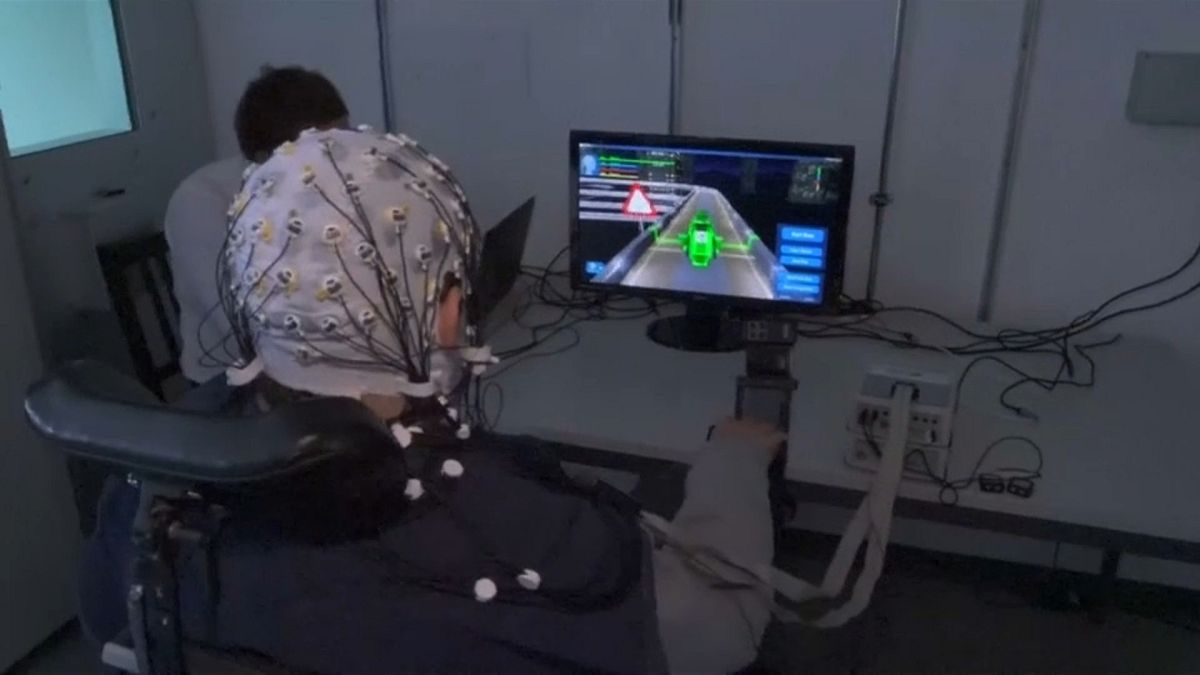Researchers in Switzerland have developed a technology which allows people with severely impaired motor functions to play video games, using only their minds.
Researchers in Switzerland have developed a technology which allows people with severely impaired motor functions to play video games, using only their minds.
Scientists say that the ultimate goal of the project is to build a system whereby a wheelchair can be controlled by its user's brain signals, helping those with limited mobility.
The programme, called 'Brain Driver,' is being trialled by people including Samuel Kunz, who became paralyzed following an accident.
Kunz operates a digital race car by picturing which way he wants it to move. When he thinks about his left hand, the car veers left. The same works for the right. If the driver thinks about both hands at the same time the car drives straight ahead. Most impressively, when Kunz empties his mind and relaxes, he can slow the vehicle down.
This navigating takes a lot of practice and effort, Kunz explains.
"I have to be very concentrated. The connection between my fingers and my brain is not there anymore. I still try to move my fingers just in my head and so that needs a lot of concentration to do it exactly the same way every time," he said.
Next year, the Cybathlon championships will invite people with physical disabilities from across the world to Zurich to compete using the latest technology.
'Brain Driver' will be showcased at the competition, with four participants racing each other's minds to cross the finish line.
So, how does it work?
The online avatars are controlled by brain signals, transmitted to the computer by electrodes attached to users' heads, explained Dr Rea Lehner.
"So these electrodes are connected to an amplifier and then to the computer and to our algorithms in the end. The algorithms are then calculating the brain signal and sending commands to the game that our pilot can actually control."
This proves complex as brain signals are dwarfed in comparison with muscle activity.
"We need to make sure that we filter out any muscle activity and what we have left is the pure brain signal," she continued.
One of the greatest challenges for neuroscientists in the project was actually something that functions to protect the brain - the skull.
"The skull is a very good insulator and of course it protects your brain, that's a good thing, but it also protects the signals that your brain is producing from us who want to read them," explained Nicole Wenderoth, Zurich's professor for neural control of movement.
The next generation of technology may see scientists implanting non-invasive sensors and electrodes into the brain itself.
